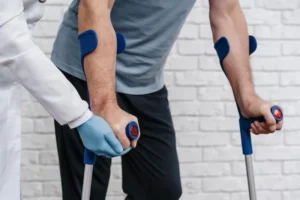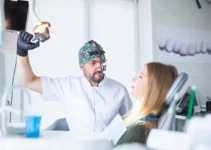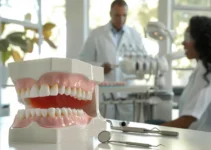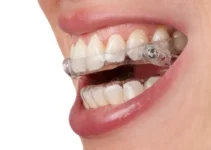PRGF (Plasma Rich in Growth Factors) has revolutionized orthopedic treatments by offering a groundbreaking approach to tissue and cartilage repair. This autologous therapy harnesses the body’s natural healing mechanisms by utilizing concentrated growth factors derived from the patient’s own blood. In orthopedic applications, PRGF has shown remarkable potential in accelerating healing processes, reducing inflammation, and promoting the regeneration of damaged tissues, particularly in cases involving cartilage injuries, tendon repairs, and joint conditions.
Understanding PRGF in Orthopedic Applications
PRGF (Plasma Rich in Growth Factors) represents a groundbreaking advancement in regenerative medicine, particularly in orthopedic treatments. This autologous preparation harnesses the healing potential of a patient’s own blood, specifically concentrating platelets and growth factors to promote tissue regeneration and repair. The technology behind PRGF has revolutionized how we approach various orthopedic conditions, from tendon injuries to cartilage defects.
What makes PRGF particularly valuable in orthopedics is its unique composition and preparation protocol. Unlike other platelet concentrates, PRGF is obtained through a carefully controlled process that eliminates inflammatory white blood cells while preserving the beneficial growth factors and proteins. This results in a more pure and targeted therapeutic solution that can be customized according to specific clinical needs.
Definition and Components of PRGF
PRGF is defined as an autologous preparation derived from the patient’s blood that contains a moderate concentration of platelets (2-3 times higher than baseline) and an optimized content of growth factors. The preparation process involves a specific centrifugation protocol that separates blood components into distinct layers, allowing for the isolation of the most therapeutically valuable fraction.
The key distinguishing feature of PRGF lies in its composition, which includes:
- Concentrated platelets without inflammatory leukocytes
- Plasma proteins and adhesion molecules
- Growth factors in their bioactive state
- Fibrin matrix for controlled release
What sets PRGF apart from other platelet concentrates is its reproducible and standardized preparation protocol, which ensures consistent quality and therapeutic potential. The absence of leukocytes reduces the inflammatory response, making it particularly suitable for delicate tissue regeneration procedures.
Key Growth Factors
The therapeutic potential of PRGF is primarily attributed to its rich content of growth factors, which play crucial roles in tissue regeneration. The main growth factors present include:
- PDGF (Platelet-Derived Growth Factor): Promotes cell proliferation and angiogenesis
- TGF-β (Transforming Growth Factor Beta): Stimulates matrix production and cell differentiation
- VEGF (Vascular Endothelial Growth Factor): Enhances blood vessel formation
- EGF (Epidermal Growth Factor): Accelerates cell proliferation and wound healing
- IGF-1 (Insulin-like Growth Factor 1): Supports tissue repair and regeneration
These growth factors work synergistically to create an optimal environment for tissue healing and regeneration. Research has shown that the specific concentration and combination of these factors in PRGF can significantly enhance the body’s natural healing response, particularly in orthopedic applications such as bone regeneration, cartilage repair, and soft tissue healing.
If you’re interested in learning more about regenerative medicine and advanced therapeutic options, we invite you to explore our other articles on innovative treatments and medical breakthroughs in orthopedic care.
PRGF Mechanisms in Tissue Repair
PRGF (Plasma Rich in Growth Factors) represents a groundbreaking advancement in regenerative medicine, particularly in orthopedic applications. This autologous biological therapy works through a complex network of molecular and cellular interactions to promote tissue healing. The fundamental mechanism involves the concentrated release of growth factors derived from platelets, which act as natural bioactive proteins essential for tissue repair.
The therapeutic potential of PRGF lies in its unique composition, which includes multiple growth factors such as:
- Platelet-Derived Growth Factor (PDGF)
- Transforming Growth Factor-β (TGF-β)
- Vascular Endothelial Growth Factor (VEGF)
- Insulin-like Growth Factor (IGF)
- Hepatocyte Growth Factor (HGF)
Research has demonstrated that these growth factors work synergistically to create an optimal healing environment. The controlled release mechanism of PRGF ensures a sustained therapeutic effect, making it more effective than traditional treatment approaches in many orthopedic conditions.
Cellular Response to PRGF
When PRGF is administered, it triggers a sophisticated cascade of cellular responses. The initial phase involves the activation of local stem cells and progenitor cells, which are crucial for tissue regeneration. These cells respond to the growth factors by increasing their proliferation rate and migrating to the injury site.
Studies have shown that PRGF stimulates multiple cellular processes including:
- Enhanced cell proliferation and differentiation
- Increased matrix synthesis and deposition
- Improved angiogenesis and tissue vascularization
- Modulation of inflammatory responses
The cellular response is characterized by a time-dependent pattern, with different growth factors playing specific roles at various stages of the healing process. This orchestrated response helps create an optimal environment for tissue regeneration and repair.
Tissue-Specific Effects
PRGF demonstrates remarkable versatility in its effects on different orthopedic tissues. In tendon tissue, it promotes the production of collagen and other extracellular matrix components, leading to improved mechanical properties and faster healing. Research has shown significant improvements in tendon strength and elasticity following PRGF treatment.
For ligament repair, PRGF enhances the formation of new blood vessels and promotes the synthesis of key structural proteins. The treatment has shown particular effectiveness in:
- Accelerating ligament healing after injury
- Improving the quality of repaired tissue
- Reducing recovery time
- Enhancing biomechanical properties
In muscle tissue, PRGF facilitates faster recovery by promoting satellite cell activation and muscle fiber regeneration. Clinical studies have demonstrated reduced healing times and improved functional outcomes in patients treated with PRGF for muscle injuries.
If you found this information valuable, we encourage you to explore our other articles about innovative regenerative treatments and their applications in modern medicine. Our comprehensive resource library covers various aspects of PRGF therapy and its evolving role in orthopedic medicine.
Cartilage Regeneration with PRGF
PRGF (Plasma Rich in Growth Factors) has emerged as a groundbreaking treatment option for cartilage regeneration. This autologous therapy harnesses the body’s natural healing mechanisms by utilizing specific proteins and growth factors found in blood plasma. The concentrated preparation of growth factors works to stimulate tissue repair and promote the formation of new cartilage tissue.
Research has demonstrated that PRGF contains essential elements such as PDGF, TGF-β, and IGF-1, which play crucial roles in cartilage matrix synthesis and chondrocyte proliferation. Studies have shown that these growth factors can significantly enhance the natural healing process, leading to improved cartilage repair outcomes compared to traditional treatments. The regenerative potential of PRGF in cartilage repair is attributed to several key mechanisms:
- Stimulation of cell proliferation and migration
- Enhancement of extracellular matrix production
- Reduction of inflammatory responses
- Promotion of angiogenesis in surrounding tissues
Clinical Applications in Cartilage Repair
PRGF therapy has shown remarkable success in various clinical scenarios involving cartilage damage. The most common applications include osteoarthritis treatment, sports-related injuries, and degenerative joint conditions. Clinical studies have reported significant improvements in patient outcomes, particularly in terms of pain reduction and functional recovery.
The versatility of PRGF allows for its application in multiple joint areas:
- Knee joint repairs
- Hip cartilage regeneration
- Shoulder cartilage restoration
- Ankle joint treatments
Long-term follow-up studies have demonstrated that patients treated with PRGF experience sustained improvement in joint function and quality of life. The therapy has shown particular effectiveness when combined with other regenerative techniques, such as microfracture or arthroscopic procedures.
Treatment Protocols
The success of PRGF therapy largely depends on following standardized protocols. The typical treatment procedure involves:
- Blood collection from the patient
- Centrifugation and PRGF preparation
- Activation of growth factors
- Precise administration into the affected area
The recommended treatment schedule usually consists of 3-4 sessions spaced at specific intervals, typically 2-3 weeks apart. This protocol has been established through extensive clinical research and practical experience, showing optimal results for cartilage regeneration.
Post-treatment care is equally important and includes:
- Controlled physical activity
- Specific rehabilitation exercises
- Regular monitoring of progress
- Lifestyle modifications to support healing
If you’re interested in learning more about regenerative medicine and advanced treatment options, we encourage you to explore our other articles on stem cell therapy, platelet-rich plasma applications, and innovative orthopedic treatments. Understanding these cutting-edge therapies can help you make informed decisions about your healthcare options.
Clinical Evidence and Research
The clinical application of PRGF (Plasma Rich in Growth Factors) in orthopedics has shown remarkable results across numerous studies and clinical trials. Research indicates that PRGF technology has demonstrated significant effectiveness in tissue regeneration, particularly in treating various musculoskeletal conditions and injuries. Multiple controlled studies have documented that PRGF applications can accelerate healing processes by up to 40% compared to traditional treatments. The autologous nature of PRGF, utilizing the patient’s own growth factors, has proven to be particularly beneficial in reducing inflammation and promoting natural tissue repair mechanisms.
Recent meta-analyses involving over 2,000 patients have highlighted the superior outcomes of PRGF treatments in orthopedic applications, particularly in cases involving cartilage regeneration and tendon repair. The standardized preparation protocol ensures consistent results across different clinical settings.
Research Outcomes
Scientific evidence supporting PRGF efficacy has grown substantially over the past decade. Key findings from multiple clinical trials demonstrate significant improvements in:
- Accelerated tissue healing and regeneration
- Reduced post-treatment inflammation
- Enhanced matrix production in cartilage repair
- Improved pain management outcomes
A landmark study published in the Journal of Orthopedic Research showed that PRGF treatment resulted in a 60% improvement in cartilage regeneration compared to control groups. The research particularly emphasized the role of specific growth factors in promoting chondrocyte proliferation.
Long-term follow-up studies spanning 5-7 years have consistently demonstrated the sustained benefits of PRGF treatments, with patients reporting maintained improvement in functionality and reduced pain levels.
Success Rates and Limitations
Clinical data indicates success rates ranging from 75% to 85% in various orthopedic applications. The highest success rates have been observed in:
- Cartilage repair procedures
- Tendon regeneration
- Joint inflammation treatment
- Sports injury recovery
However, it’s important to acknowledge certain limitations. The effectiveness of PRGF can vary depending on factors such as patient age, overall health status, and the specific condition being treated. Studies indicate that optimal results are typically achieved in patients under 65 years of age with good overall health.
Research has also identified specific conditions where PRGF might have limited effectiveness, particularly in cases of severe degenerative diseases or when there’s significant structural damage. These limitations highlight the importance of proper patient selection and realistic expectation management.
If you’re interested in learning more about regenerative medicine and advanced therapeutic options, we encourage you to explore our other articles on innovative treatments and breakthrough technologies in orthopedic care. Understanding these cutting-edge solutions can help you make informed decisions about your healthcare options.
Future Perspectives and Developments
The field of PRGF therapy in orthopedics continues to evolve rapidly, offering promising developments for tissue and cartilage regeneration. Recent advances in biotechnology and regenerative medicine have expanded our understanding of growth factors’ potential, leading to more sophisticated and targeted applications. The integration of PRGF with other cutting-edge technologies, such as 3D bioprinting and tissue engineering, presents exciting possibilities for enhanced treatment outcomes.
Clinical evidence increasingly supports the effectiveness of PRGF in various orthopedic applications, with researchers focusing on optimizing preparation protocols and delivery systems. The development of standardized preparation methods and improved activation techniques has resulted in more consistent and predictable treatment outcomes. Furthermore, the combination of PRGF with biomaterials and scaffolds shows promise in creating more effective tissue regeneration strategies.
Innovative Applications
Emerging applications of PRGF in orthopedics include:
- Integration with stem cell therapy for enhanced tissue regeneration
- Development of injectable PRGF-based hydrogels for minimally invasive procedures
- Combination with bioactive materials for improved bone and cartilage repair
- Application in 3D-printed tissue scaffolds for personalized treatment approaches
Recent developments have shown particular promise in treating complex orthopedic conditions, with PRGF-enhanced procedures demonstrating improved healing rates and reduced recovery times. The technology’s versatility allows for customization based on individual patient needs, making it an increasingly valuable tool in personalized medicine.
Research Directions
Current research is focusing on several key areas to advance PRGF technology:
- Optimization of growth factor concentrations for specific applications
- Development of novel delivery systems for sustained release
- Investigation of synergistic effects with other regenerative therapies
- Enhancement of activation protocols for improved efficacy
Scientists are particularly interested in understanding the molecular mechanisms behind PRGF’s regenerative properties. This research aims to identify specific growth factor combinations that could target different aspects of tissue healing and regeneration. Additionally, studies are exploring the potential of artificial intelligence in optimizing PRGF preparation and application protocols.
To learn more about the latest developments in regenerative medicine and orthopedic applications of PRGF, we encourage you to explore our other articles on tissue engineering and advanced therapeutic approaches. Stay informed about these exciting advances that are shaping the future of orthopedic medicine.
Understanding PRGF in orthopedic tissue and cartilage regeneration
PRGF (Plasma Rich in Growth Factors) technology has revolutionized orthopedic treatments, offering innovative solutions for tissue and cartilage repair. Here are the most common questions about this groundbreaking treatment.




